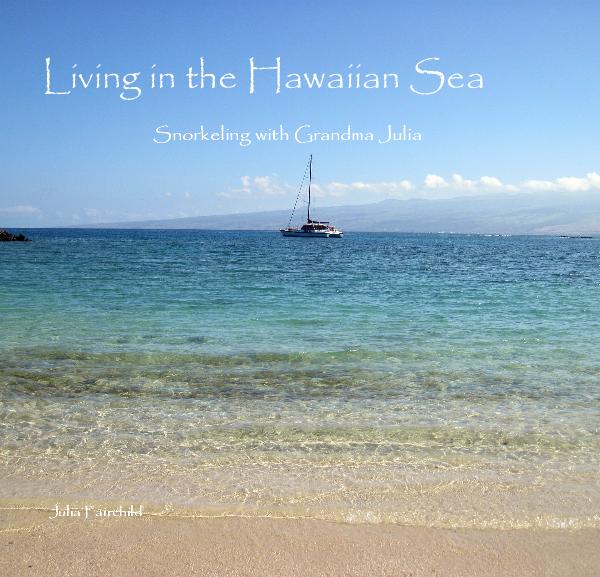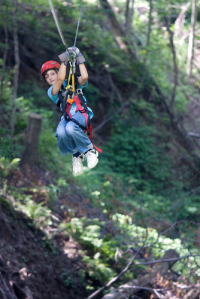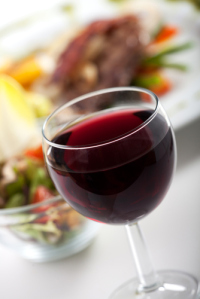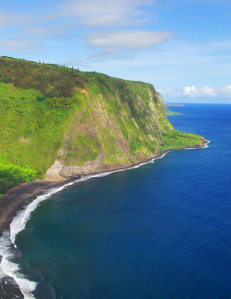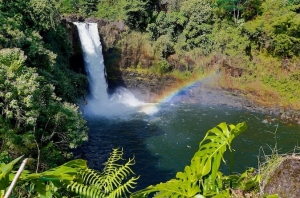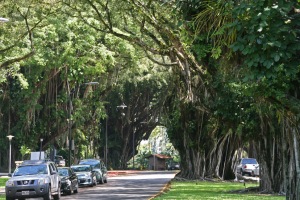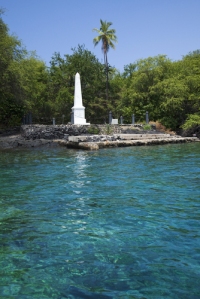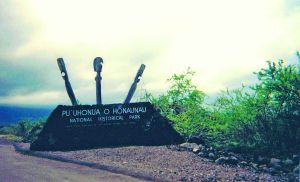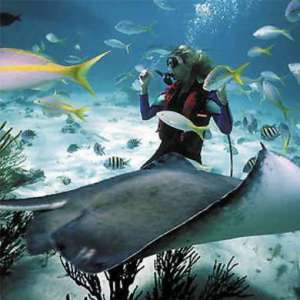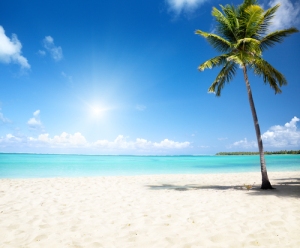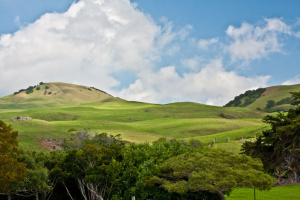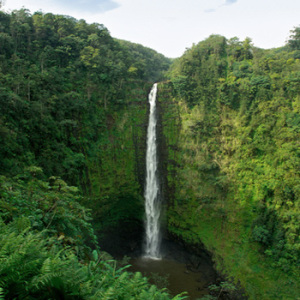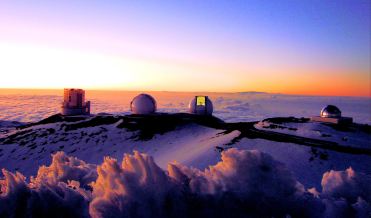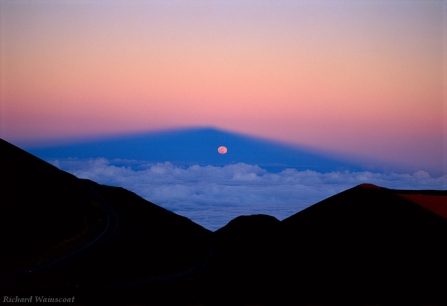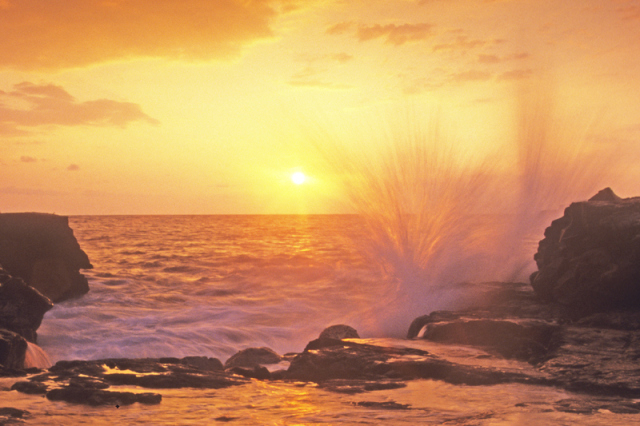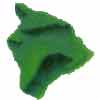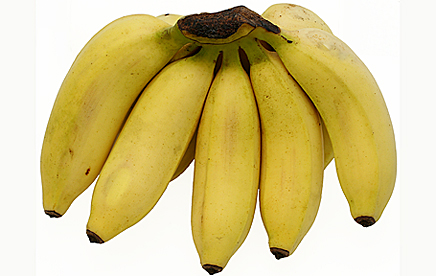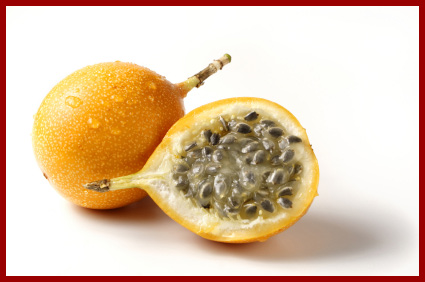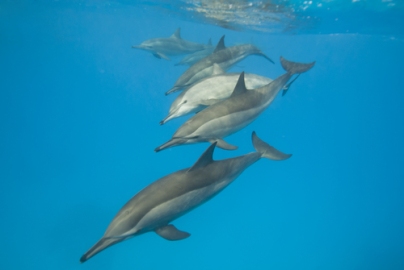 Another info-packed article from Ke Ola Magazine. Marya Mann shares her insights and information on our beloved Mauna Kea, and takes us along on a guided tour to the Keck Observatory atop Mauna Kea. Reprinted here with permission of Ke Ola Magazine.
Another info-packed article from Ke Ola Magazine. Marya Mann shares her insights and information on our beloved Mauna Kea, and takes us along on a guided tour to the Keck Observatory atop Mauna Kea. Reprinted here with permission of Ke Ola Magazine.
 On the astronomical clock, our sun isn’t very old. Estimated by scientists to be 4.5 billion years young, the mighty sun helped spawn the early Earth. Out of light, action and inter-planetary collisions – or collaborations — the natural world we live in now, our age of flowering plants and pollinating insects, arrived an astronomical minute or so later, 100 million years ago.
On the astronomical clock, our sun isn’t very old. Estimated by scientists to be 4.5 billion years young, the mighty sun helped spawn the early Earth. Out of light, action and inter-planetary collisions – or collaborations — the natural world we live in now, our age of flowering plants and pollinating insects, arrived an astronomical minute or so later, 100 million years ago.
A mere one million years ago, Mauna Kea emerged as a fiery volcano from the ocean floor to become today’s snowy peak, the tallest summit in Hawai’i. Larger than Mount Everest when measured from seabed to its peak, Mauna Kea’s last eruption was 3500 years ago.
Today, alpine snows, billowy clouds, and pale mists interweave with the land to remind us of the power of nature to create symmetry, excitement and new vistas. Rising in surreal contours, touching the heavens, Mauna Kea can be seen from all sides of the island. As a well-cut diamond has many facets, Mauna Kea reflects different perspectives and colors of light in each facet, revealing many shades in a range of human endeavor. According to native Hawaiians, everything comes from the white-capped shrine, the piko, the center.
According to native Hawaiians, everything comes from the white-capped shrine, the piko, the center.
Revered as an abode of peace in ancient Hawaiian chants and a temple for cultural practitioners [See “Pilgrimage to the Sky, “ p. 21] legend has it that ancient Polynesian navigators looked upon Mauna Kea as a beacon guiding their voyages of discovery.
Today, Mauna Kea beckons us again. An ecological miracle to conservationists who see in the symbiotic partnerships of 3,000 remaining palila birds living among māmane trees on the mountain’s southern and western slopes, the mountain guides us toward unusual adaptations and alliances.
To a growing number of scientists, tourists, educators and union workers, Mauna Kea is the best spot on Earth to view the rivers of stars, the heavens of exo-planets that saturate the firmament. Everyone who pauses, listens and sees has to appreciate that we are hearing and viewing an interstellar dance, a song of vibration, rhythm and beauty, a singular point in perspective in the evolving cosmos.
Mauna Kea, because of her 320 cloudless nights each year, low water vapor in the atmosphere, and an altitude of 13,796 ft. above sea level, is renowned around the world as the premier spot to view the heavens. An array of world-class astronomical
observatories form a 21st century Stonehenge, the Mauna Kea
Observatory Complex, several hundred feet below the summit cone, Pu’u Wēkiu.
Driving from Kona, your ears pop as you pass the Girl Scout Camp, the Pōhakuloa Army Training Area, traversing the dry scrub landscape of Saddle Road, dotted with golden green towers of mullein and sprays of red ti leaf shooting up like sudden fire. Linking east and west, Hilo and Kona, Saddle Road connects the two sides of the island like a corpus collosum, weaving two sides of our island brain.
At the 27.9 mile marker, opposite Pu’u Huluhulu, a Hawaiian shrine holds offerings proffered for the safe passage of all who ascend to the summit. You turn north onto the Mauna Kea Road.
Pu’u – cinder cones – protrude like fern-forested bubbles in the landscape as you drive higher, rising above the dry forests of naio trees and the rainforests of koa and ‘ōhia lehua, entering into the subalpine silversword zone. You are climbing the tallest mountain on Earth. Ancient Hawaiians living on these slopes hunted forests for food and quarried the dense basalt flakes for tool-making. When Europeans arrived in the late 18th century, settlers introduced cattle, sheep and game animals, many of which damaged the ecology.
Ascending the summit of Mauna Kea takes one closer to the spiritual and the supernatural realms, and because of the extreme altitude of Mauna Kea, it takes one closer to an appreciation for oxygen. Everyone must acclimatize to the atmosphere. Astronomers, guests, tourists, technicians, commercial tour guides and families of four, if you’re driving up for the day, it’s strongly encouraged to spend at least a half hour at the Visitor Information Station (VIS) before ascending to the summit.
On today’s tour, I’m joining backpackers, vacationers from Iowa, and two Kainaliu massage therapists who join student volunteers, staff and a ranger or two who will lead our summit escort. Like acolytes, we follow the educators and astronomers that have a passion for sharing their passion for the stars. Among them are John, an astronomy professor from Wesleyan University, and Kim, a graduate of UH-Hilo’s Astronomy Program.
Someone informs us that Mauna Kea has entered old age, its last major eruption being 4,000 – 6,000 years ago.
“Okay, everybody. We’re going to follow the leader here,” says John. “There should be no one under 16, no one pregnant, no one who has scuba dived in the last 24 hours.” John has spent the past 11 summers coming to the Big Island as a volunteer tour leader. “We will stay in radio contact at all times. It’s steep up there. You may be very afraid. The roads are narrow.”
We line up the nine four-wheel-drive vehicles and caravan up, voyagers in first gear on the road to new frontiers in science and discovery. We pass through the Mauna Kea Ice Age Natural Area reserve. At its peak 500,000 years ago, Mauna Kea was thought to stand 17,000 feet above sea level. It is the only Hawaiian volcano with distinct evidence of at least three glaciers in the last 180,000 years, which, despite our tropical climate, sculpted the mountain, carving scree slopes and depositing moraines on their
downhill slides.
Behind the Visitor’s Center is a Swiss chalet-looking facility, with room for 72 people to live, eat and work at the summit, where astronomers live for weeks and months at a time. Trucks with snow blades, electrical grids and other support buildings make it appear like a quaint European village plopped down in the equatorial tropics.
The dust cloud ahead where four-wheel drive cars and trucks bounce over 4.6 miles of jagged unpaved roadway, appears to be growing.
A circular ring of glacial till, veined with red and rust-colored minerals like iron basalt, supports a spiral of telescopes on Mauna Kea that include high-tech marvels like the 15-meter James Clerk Maxwell Telescope (JCMT). It captures radio images allowing scientists to look through cosmic clouds and watch stars being born.
There’s the Very Long Baseline Array (VLBA), Caltech Submillimeter Observatory (CSO), and the United Kingdom Infrared Telescope (UKIRT), which maps low-mass stars known as T dwarfs, explores galaxy clusters, and finds “hot Jupiters” orbiting other stars in the dry, dark nights. From their 14,000-foot perch, they produce 100s of gigabytes of data channeled through computers and into university labs, astronomy departments and research facilities all over the world via the Internet.
NASA’s Infrared Telescope Facility (IRTF) supports space missions and monitors objects in our solar system, tracks volcanic activity on Io — a large moon of Jupiter — maps water and methane in the atmosphere of Mars, and measures asteroid and comet composition.
While John expounds on the mirrored hexagonal segments raised on platforms around the main mirror, I’m looking for clues to answer questions about how our universe evolved, and Keck I is the place to look.
The Keck I has confirmed the discovery of more extra-solar planets than any other ground-based telescope on Earth,” according to Leslie Lang and David Byrne in the Mauna Kea Handbook.
Here on top of Mauna Kea, we step out of our trucks and are ushered inside the visitors’ observation cage. A chilly, temperature-controlled dome houses each of the 10-meter telescopes. At 300 tons each, they require 101-ft. tall domes to protect them. Each telescope is comprised of 36 hexagonal mirrors that analyze incoming photons, which are processed and sent to the main headquarters in Waimea and distributed world-wide
almost instantaneously.
Keck astronomers are right now scrambling to ask questions that can’t be answered at any other terrestrial telescope in the world. What might a once-in-a-lifetime stellar explosion unfolding in a neighboring galaxy mean for Earth? Do other planets in the universe show chemical signatures of life?
The Keck Twins have 10-meter viewing surfaces, which is simplistic since sometimes they use interferometry to bring the two telescopes to work together, and the angular resolution has the power of a much larger telescope. To compare size-wise, the Hubble Space Telescope is a 2.4 meter (7.9 ft) mirror, similar in size to the UH88, now the second smallest telescope on Mauna Kea.
The proposed Thirty Meter Telescope (TMT) will be 30 meters, almost 100 feet in diameter.
The Mauna Kea Handbook states: “Notice the Hawaiian kuahu lele (altar) on the nearby geographical summit to the east. In recent years some Hawaiians constructed it as an expression of their reverence for the summit and the mountain. You can show your respect for Hawaiian culture by not hiking to this sacred place.”
Night viewing at the Onizuka Visitor’s Center, at 6 or 7 p.m., when volunteers pull out the barrel telescopes and aim six or so telescopes at the sky, highlights an already stellar day. On the observation patio, a 16” Schmidt-Cassegrain attracts 40 or so people eager to view the ocean of stars sparkling overhead.
Interpretive guides, astronomy students and University of Hawai‘i volunteers help us find celestial bodies. Here are rivers of heaven, pouring their lighted essence through time toward us, bringing us light from the past, light which has travelled to us from 14 billion light years away. The light is somewhere around 14 billion years old.
In 1968, the Hawai‘i State Board of Land and Natural Resources (BLNR) granted a 65-year lease to the University of Hawai’i on an 11,288-acre area of the mountain summit, which became known as the Mauna Kea Science Reserve. The agreed rental fee to be paid to the state of Hawai‘i? ~ $1 per year.
Two 0.6-meter telescopes were planted near the summit by the U .S. Air Force and NASA, and the UH 2.2-meter telescope followed, producing sharp new portraits of our solar system. Three more telescopes were erected in 1970, and the race was on to build more astronomical supersight atop Mauna Kea.
Officially, there were supposed to be 13 telescopes on the mountain. Today the Mauna Kea Science Reserve has 13 observation facilities, each with one or multiple telescopes, funded by as many as 11 countries. It is the largest such complex in the world. Nine telescopes work in the visible and infrared spectrum, three in the submillimeter spectrum, and one in the radio spectrum.
Confusion over the number of telescopes goes back to when “telescopes had an impact area of one acre and would only be five stories tall,” says Pat Wright, long-time observer of Mauna Kea and owner of Mauna Kea Summit Adventures. “Back in the day, the locals, the bureau (BLNR) said ‘we can limit it to 13 kinds of telescopes like that: one acre each. We can live with that. Thirteen one-acre telescopes.’ Because it was the only kind of telescope anyone knew of at the time,” says Mr. Wright.
Now, the TMT Observatory Corporation has chosen Mauna Kea as the preferred site for its $1.3 billion Thirty Meter Telescope, a quantum leap in telescope design, which would leave a five-acre footprint in the fragile alpine summit zone.
With a primary mirror of nearly 100 feet in diameter, with nine times the light-gathering capacity of today’s best telescopes, the TMT has been approved by the Office of Mauna Kea Management (OMKM) and the BLNR for construction within the Mauna Kea Science Reserve at the 13,150’ elevation on the northern slope of Mauna Kea, an area leased by UH until 2033.
The TMT and associated support structures will make a 5-to-8-acre footprint on the mountain. That’s one telescope eight times the size of the first telescopes allowed. Despite the involvement of multi-billion dollar astronomical corporations, and despite laws requiring fair-market rents for the use of Hawai‘i mountaintops, all these facilities continue to be charged only $1 per year.
In return, the OMKM, University of Hawai‘i, and Joint Astronomy Center offer free escorted tours, a humble but ambitious visitor information center, and nighttime viewing for the amateur astronomer, assisted by volunteers, Hawaiian cultural specialists, and guests from the island and all around the world.
This is a key period in the evolution of our universe. Dramatic increases in the discovery of stellar nurseries and new and old galaxies in the last decade — since 2002 when an Advanced Camera was installed in Hubble — have fueled the race to learn more about the stars.
Proponents of the Thirty Meter Telescope (TMT) believe its powerful adaptive optics will play a decisive role in helping us understand more about how young galaxies are formed and how stars influence the universe.
But its location on Mauna Kea, the five-acre footprint on the northern plateau, irreversible damage to the peaceful mountain, have many up in arms. Before snooping around the universe with big telescopes that can kill everything on the ground, they say, we ought to scientifically weigh the relative significance of scientific research, economic, cultural and religious freedoms as well as the wisdom of biological diversity.
TMT Project Manager Gary Sanders claims their Conservation District Use Application and Environmental Impact Assessment answer every legal, economic, environmental, spiritual, visual, financial and cultural question about impacts to Hawai’i Island and that they have funding to move forward.
A contested case hearing with judge Paul Aoki is expected to yield a decision regarding the TMT in February, 2012. After weighing the concerns from both TMT, the University of Hawai‘i and those objecting to the TMT project, he will issue a recommendation on the telescope. The land board has the option of accepting or rejecting Aoki’s recommendation and may reverse its approval of the TMT permit.
The telescope’s original cost was estimated in 2009 to be $970 million, according to Peter Sur of Stephens Media. Now, with a price tag of $1.3 billion, more than $130 million has already been spent on design and “shifting of mindsets (to) create positive enthusiasm” in affected communities.
Listen to Mauna Kea, say the kupuna, where we all must stand together if we are to whole-heartedly and enthusiastically reach for the stars.
Resources:
Visitor Information Station:
808.961.2180
www.ifa.hawaii.edu/info/vis
Mauna Kea Weather: Recorded road conditions: 808.935.6268 http://mkwc.ifa.hawaii.edu
Office of Mauna Kea Management (OMKM): www.malamamaunakea.org
Institute for Astronomy: www.ifa.hawaii.edu
Reach Pat Wright at Mauna Kea Summit Adventures www.maunakea.com

